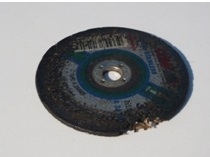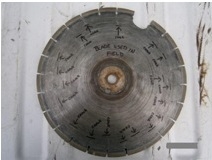Learning From Accidents


Grinding or cutting power tools can be very dangerous. When these tools are used incorrectly or improperly, serious injuries can occur. Proper training is crucial for the safety of the operator. Employees need to be familiar with the manufacturer’s specifications and safety precautions of the tool. As an example, two dangerous hazards are employees either using the wrong "type" of wheel or the use of an abrasive wheel not rated to handle the high RPMs of a grinder. The exposed moving parts of power tools must be safeguarded (29 CFR 1910.215 & 1926.303). If the wheel breaks or violently shatters, parts of the wheel can cause serious bodily injuries such as punctures and/or lacerations. Here are some helpful tips.
- Ensure the wheel used has a higher RPM rating than the power tool.
- Be sure a guard is installed.
- Read the wheel label and ensure the wheel is designed for the material you are using it for (example: metal/stainless).
- Never stand or allow others to stand directly in front of the wheel as it accelerates to full operating speed.
- Ensure the spindle and wheel hole size are a match; never alter the circumference of the hole.
- Always follow the manufacturer's safety recommendations.
Lastly, before you install any new wheel on a grinder, conduct a "ring test." This will let you know if the wheel has cracks due to a manufacturer defect or if it was damaged during shipping. The "ring test" can be conducted by taking an object such as a pen and inserting it in the hole at of the center of the wheel. While balancing the wheel on the pen in a horizontal position, take a light metallic object and tap the wheel. The wheel should provide a clear metallic tone or "ring". A defective wheel will have a dull "thud" sound. The "ring test" should provide a quality check for the operator of the wheel before installation or use. Inspecting these wheels can be the difference between having a good day and a bad day!
Use the right tool for the job! No job is too important to risk your safety.

